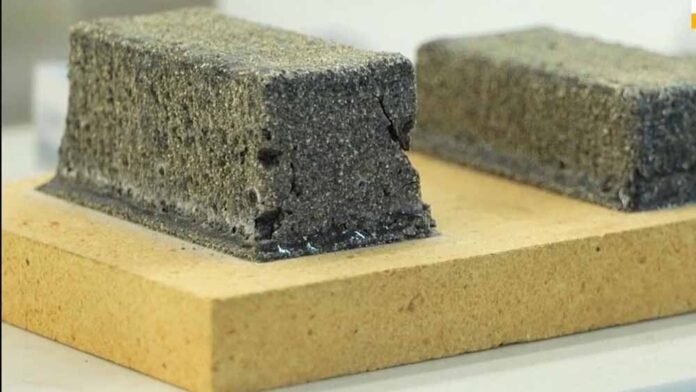Researchers say the findings could help predict how such brick age over 5, 10 or even 20 years on the lunar surface, bringing China’s vision of its “Guanghan Palace” a little closer to reality.
China has inched closer toward its ambitious goal of building infrastructure on the Moon, as the first set of experimental ‘lunar soil bricks’ returned to Earth after a year-long exposure to the harsh environment of space as part of a pioneering experiment aboard China’s space station.
The specially engineered blocks touched down last week on the Shenzhou-21 spacecraft, alongside three astronauts completing a six-month mission.
Initial inspections suggest the samples survived their year in orbit remarkably well, offering what scientists describe as a promising early proof-of-concept for future lunar construction.
“Upon opening the lid, we found that the samples were in good condition. There were no dents, holes, or other visible defects that we thought they might have because of impacts by meteorites or space debris,” said Zhou Yan, associate professor at Huazhong University of Science and Technology in Wuhan.
“Besides, their colours looked slightly lighter than before. It requires further assessments to figure out the reason,” he added.
The 34 returned blocks, each weighing around 100 grams, were produced using materials that mimic the composition of lunar regolith.
They were compacted through hot pressing, electromagnetic induction, and microwave sintering – techniques that give them a compressive strength roughly three times greater than standard bricks, making them more suitable for the extreme environment of space. (euronews.)
Could these tiny bricks unlock China’s lunar ambitions?
“Some of the samples that we sent into space were complete, while some had 45-degree symmetrical seams that we made in advance. By doing so, we wanted to see what changes they will undergo in terms of their mechanical properties after a year on the space station,” said Qin Yiheng, a graduate student at the university involved in the project.
Alongside mechanical strength, the experiment is testing how the bricks’ thermal behaviour and radiation resistance hold up after prolonged exposure. A parallel control group on Earth will help researchers pinpoint exactly how space conditions alter the material.
“After the return of the third batch of samples, based on more horizontal comparisons, we may be able to discover a pattern and ultimately build a model, so that we can predict what they will look like after five, 10 or 20 years of service. And eventually, we can even forecast possible changes in a lunar environment through this analysis,” Zhou added.
China’s lunar programme aims to land astronauts on the Moon by 2030 and construct a basic version of its planned International Lunar Research Station by 2035.
To reduce the immense cost of transporting materials from Earth, the country intends to rely heavily on in-situ resources such as lunar soil, solar energy, and surface minerals.
Friday, November 28, 2025

